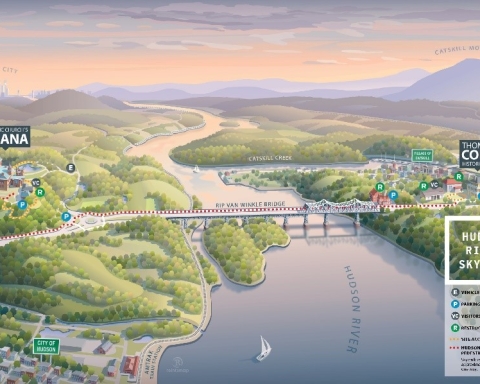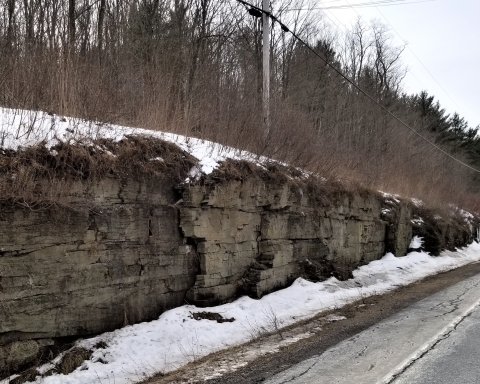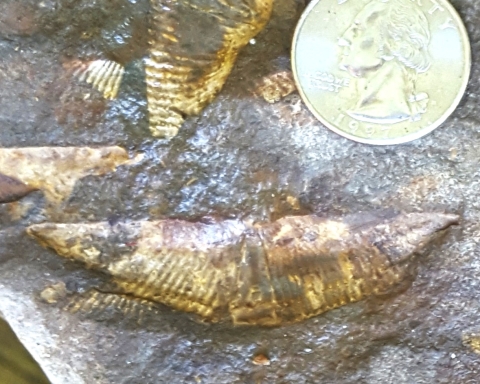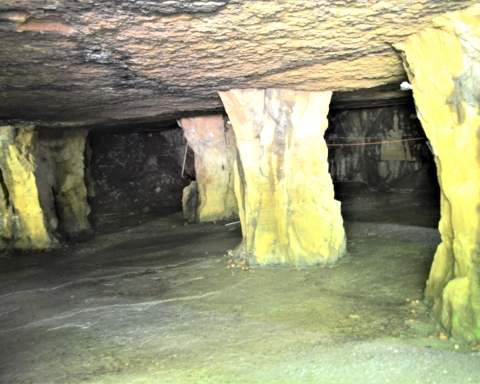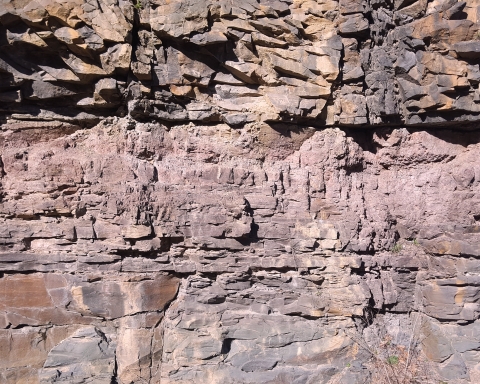Stories in Stone
Depths of Depression
Woodstock Times
Mar. 5, 1998
Updated by Robert and Johanna Titus
The sinking of the Titanic is one of the great stories of history. It’s complete with drama, heroism, and even suspense–despite the inevitable ending. Throw in a little romance and no wonder that the current movie has been such a hit. Part of the movie’s success is the allure of the deep. The ocean’s great mysterious abyssal plain retains, even today, a compelling fascination. To scientists, however, equally gripping was the story of the discovery of the sunken liner. You remember it. Intrepid oceanographers, from the Woods Hole Oceanographic Institute, descended to the depths of the ocean’s great abyss in tiny submarines. Powerful headlights shined upon the sea floor and then upon the long unseen wreckage itself. What an incredible moment! The substance of fiction became history.
The depths of the seas had long been shrouded in mystery, and to see actual film from the deep is one of the great achievements of our times, certainly ranking with anything that our space programs have achieved. Much of the abyss is monotonous mud, but there are those many shipwrecks, and a whole exotic ecology of truly wondrous and intriguing animals.
All of this imagery is made even more appealing by the seeming impossibility of traveling to the bottom of the deep sea. Few of us, after all, get invitations from the Woods Hole. If you could visit the great abyss, would you leap at the chance, or would you shrink from the real danger of the journey? Would a good movie be enough, or would you have the adventurous streak needed for that perilous trek to the very bottom of the sea? It is dangerous; people have died down there.
Let’s make it easy. We can have you onto the abyss in probably a bit less than an hour and it will be no more dangerous than a short car ride. Find your way across the Rip Van Winkle Bridge and then go exploring. It doesn’t much matter which way you go; you soon find outcroppings of black sedimentary rocks.
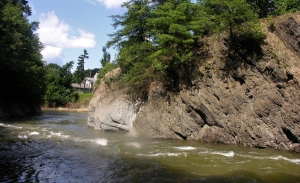
There is nothing figurative in our remarkable claim; this is really the bottom of a sea–or it was. Rising along the sides of the roads are cliffs of dark black shales with occasional sandstones. These accumulated at the bottom of a deep sea, one that was here nearly 450 million years ago. It can be called the Normanskill Sea and the layers of rock you see here were once the muds that made up its bottom.
It’s a curious thing, but way back then, the Ordovician time period, most of New England was rising into a substantial mountain range. These, the Taconic Mountains, would reach heights of maybe 15,000 feet, and perhaps a lot more. As they were rising, however, the crust of the adjacent vicinities, including today’s Hudson Valley, became depressed. Given time, a fairly substantial deep sea was produced. How deep? We don’t know for sure, but it might well have rivaled some of the deep marine trenches of today’s Pacific. It was a still, mud-bottomed, dark and very silent ocean floor.
Much of the roadside exposures are thinly bedded, black shale. That was the mud. Those layers piled up slowly over uncounted centuries. Each thin horizon had its moment, each was once the sea floor. With time, another and then another thin seam of mud would accumulate. As the weight piled up the mud was squeezed and hardened into shale.
The dark sandstones are somewhat different. These were more active influxes of sediment, moments when masses of sand tumbled into the depths.
There were living creatures at the bottom of this sea, but few large enough to leave fossils. They lived quiet lives in the Normanskill Sea; no crashing ocean liners interrupted their lives. Scientists did come and visit them, but not until nearly 450 million years after their deaths.
=========================================================================
+++++++++++++++++++++++++++++++++++++++++++++++++++++++++++++++++++++++++
Contact the authors at randjtitus@prodigy.net. Join their facebook page “The Catskill Geologist.”

